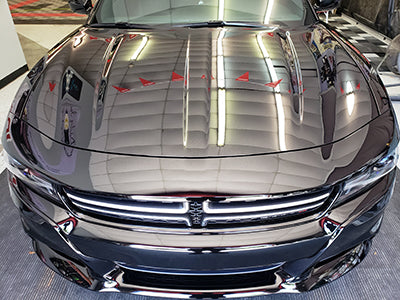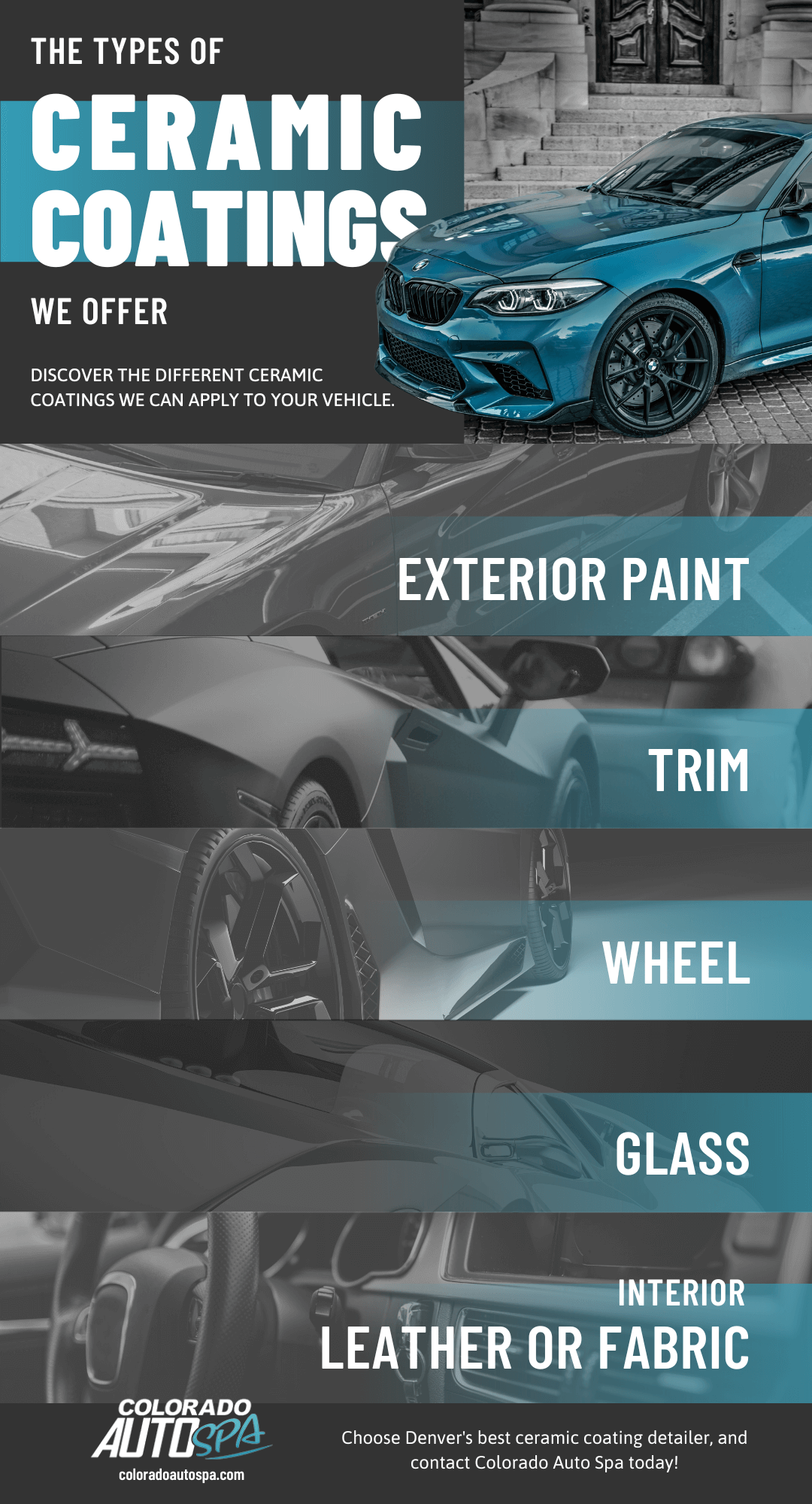Ceramic Coating vs. Typical Wax: Which Offers Much Better Long-Term Protection?
The discussion between ceramic coatings and traditional wax for automobile security has actually amassed considerable focus among automotive fanatics and professionals alike. While both satisfy of protecting paint, their distinctions in sturdiness, application, and lasting upkeep costs may influence a consumer's selection. Ceramic layers boast exceptional longevity and resistance to ecological variables, yet the intricacy of their application raises questions concerning availability and usefulness. As we discover these contrasting alternatives, it ends up being vital to take into consideration not just the prompt advantages however likewise the implications for car treatment with time.
Summary of Ceramic Finishing
Ceramic finishing has actually acquired considerable appeal among automobile enthusiasts and detailers alike because of its innovative protective qualities. This ingenious modern technology is created to create a sturdy, hydrophobic shield over a vehicle's paint surface area, substantially enhancing its resistance to ecological pollutants such as dust, UV rays, and chemical stains. Unlike typical wax, which gives a short-lived layer of security, ceramic finishings bond at a molecular level with the paint, providing resilient toughness-- commonly extending beyond 2 years with correct maintenance.
The application process entails meticulous preparation of the lorry's surface, including cleansing and brightening to guarantee ideal adhesion. Once applied, the layer cures to develop a durable layer that not only includes depth and gloss to the paint however additionally simplifies upkeep. With its hydrophobic properties, ceramic finish allows water and dirt to move off more conveniently, lowering the frequency of washes and decreasing the threat of swirl marks.
Furthermore, ceramic finishes are readily available in various solutions, enabling customers to pick items customized to their details needs and choices. Generally, ceramic layer stands for a substantial advancement in paint protection technology, supplying premium performance compared to conventional alternatives.
Review of Typical Wax
Generally regarded as a staple in automobile treatment, wax offers as a popular option for those looking for an uncomplicated technique to improve and shield their vehicle's paint - ceramic coating. Automotive wax typically comprises all-natural ingredients, such as carnauba, or synthetic compounds, developed to create a protective layer on the surface area of the paint. This layer not just enhances the automobile's gloss and shine but additionally supplies an obstacle versus ecological contaminants
The application of wax is typically straightforward, making it easily accessible for both professionals and Do it yourself enthusiasts. When used, wax requires a treating duration, after which it hardens to develop a safety shell.
Nonetheless, while wax is efficient for enhancing the visual charm of an automobile, it is very important to note that the protection it provides might demand more regular reapplication contrasted to different products, such as ceramic layers. Generally, traditional wax stays a preferred alternative for those prioritizing ease of use and prompt visual renovation.
Toughness and Long Life Comparison
While both ceramic layers and typical wax deal safety benefits for auto paint, their longevity and durability vary considerably. Standard wax, commonly made from all-natural carnauba or artificial polymers, normally provides a protective layer that lasts roughly three to 6 months. This fairly short lifespan demands normal reapplication to keep optimum defense.
On the other hand, ceramic coatings are crafted from advanced nanotechnology, forming a covalent bond with the paint surface. This results in a robust, hydrophobic layer that can endure for 2 to 5 years, depending on the item and ecological problems. The exceptional sturdiness of ceramic finishes is credited to their chemical structure, which uses improved resistance to scratches, UV rays, and oxidation.

Protection Against Ecological Aspects
Shielding a lorry's paint from environmental variables is vital for maintaining its look and value gradually. Automobiles are frequently subjected to a variety of aspects, consisting of UV rays, bird droppings, tree sap, acid rainfall, and road grime, all of which can endanger the stability of the paintwork.
Ceramic finishes supply a durable defense against these ecological assailants. Unlike conventional wax, which can break down quickly under UV exposure, ceramic layers form a sturdy, hydrophobic layer that resists the damaging results of sunlight and toxic wastes. This advanced technology produces a chemical bond with the lorry's surface, using superior security that lasts for several years, even in extreme conditions.
Typical wax, while published here simpler to use, generally requires constant reapplication and uses restricted resistance to contaminants and UV rays. Over time, it can damage down, leaving the paint vulnerable to scrapes and oxidation. In comparison, ceramic finishings keep their protective qualities longer, significantly minimizing the threat of paint damages and ensuring that the vehicle maintains its aesthetic charm. As a result, ceramic finishings are progressively acknowledged as the remarkable option for long-lasting security against ecological factors.
Application and Upkeep Distinctions
The approaches of application and succeeding upkeep for ceramic coatings and typical wax differ substantially, impacting the total customer experience and efficiency of each product. Ceramic finishes require an even more detailed application process, commonly involving surface area prep work that includes washing, sanitizing, and polishing the lorry. Once the surface area is prepared, the ceramic finish is applied in a regulated atmosphere, usually requiring specialist know-how to ensure appropriate healing and bonding to the paint.

While both products boost car appearance, the longer-lasting defense used by ceramic finishings might validate their preliminary financial investment, in spite of the even more demanding application procedure. Alternatively, conventional wax remains a prominent option for those seeking an easier, albeit temporary, service.

Final Thought
In final thought, ceramic coverings demonstrate significant benefits over standard wax in regards to resilience and ecological defense. With a lifespan prolonging two to five years and premium resistance to UV rays, dust, and chemical discolorations, ceramic coatings use an extra efficient remedy for long-term lorry maintenance. The application process may require specialist knowledge, the resulting price savings and minimized regularity of reapplication underscore the worth of ceramic coatings for see page those looking for optimum lorry protection.
The dispute between ceramic layers and traditional wax for automobile protection has actually gathered significant focus among automobile lovers and professionals alike. Unlike traditional wax, which provides a short-lived layer of protection, ceramic coverings bond at a molecular level with the paint, using lasting sturdiness-- often extending beyond 2 years with appropriate upkeep.
While both ceramic finishings and typical wax deal protective advantages for vehicle paint, their toughness and durability differ considerably. For auto lovers seeking lasting defense, ceramic coverings present a compelling benefit over conventional wax items.
In conclusion, ceramic coatings show significant advantages over conventional wax in terms of sturdiness and environmental security.
Comments on “Protect Your Car from the Elements with Ceramic Coating Technology”